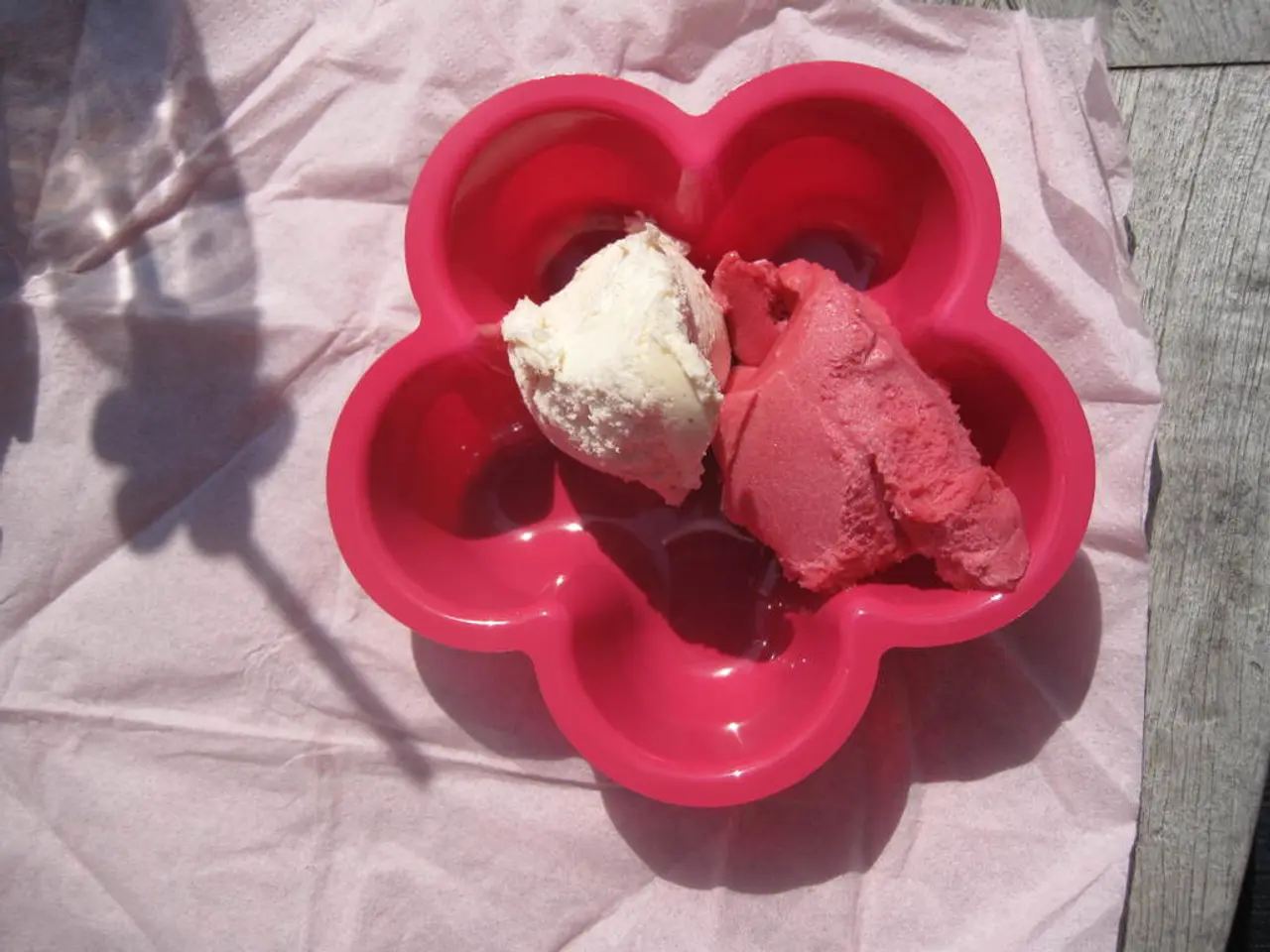Craving for ice consumption in individuals with anemia is linked to a certain condition.
In a fascinating connection between health and dietary habits, a condition known as pagophagia has been linked to iron-deficiency anemia. Pagophagia, the compulsion to eat ice, is often seen in individuals suffering from this specific type of anemia [2][4].
This unusual craving usually manifests alongside the iron deficiency and tends to disappear once the deficiency is corrected [2][4]. Experts suggest that this craving is an indirect symptom of anemia, a condition characterized by an abnormally low number of red blood cells in the body [1].
The human body requires iron to produce a protein called hemoglobin, which is vital for red blood cells. Hemoglobin is responsible for delivering oxygen throughout the body. When the body lacks sufficient iron, it can lead to anemia, causing symptoms such as fatigue, dizziness, and easy fatigue [1].
While the exact mechanism linking iron deficiency to the craving for ice is not fully understood, it is recognized as a common symptom of anemia [2][4]. Studies have reported that a significant proportion (about 81%) of pica cases, including pagophagia, coincide with anemia, indicating a strong association between the two conditions [2][4].
The correlation between iron-deficiency anemia and ice cravings was first observed in a study published in the Annals of Internal Medicine in 1968. In this study, ice-eating symptoms resolved when the iron levels in patients' blood rose into the normal range [3].
It is essential to note that while chewing on ice can provide a cooling relief for any mouth inflammation or fissures symptomatic of anemia, it can also lead to oral health issues such as injuries to soft tissue (like gums) and potential damage to teeth [5].
If you find yourself frequently craving ice, it might be a sign of anemia, and you should consider getting evaluated for it. Increasing iron intake through diet and supplements can help resolve and reverse iron-deficiency anemia, thereby diminishing or eliminating the craving for ice [6].
References: 1. Anemia. (n.d.). Mayo Clinic. https://www.mayoclinic.org/diseases-conditions/anemia/symptoms-causes/syc-20373853 2. Cunningham, J. A., & Sorensen, K. G. (1988). Pica: a review. American Journal of Clinical Nutrition, 47(6), 929-938. 3. Levine, M., & Strickler, M. S. (1968). Ice eating in iron deficiency anemia. Annals of Internal Medicine, 68(6), 1077-1080. 4. Pica. (n.d.). National Institutes of Health. https://medlineplus.gov/ency/article/000985.htm 5. Oral Health and Anemia. (n.d.). American Dental Association. https://www.ada.org/en/public-programs/oral-health-topics/oral-health-and-anemia 6. Iron Deficiency Anemia. (n.d.). Mayo Clinic. https://www.mayoclinic.org/diseases-conditions/iron-deficiency-anemia/diagnosis-treatment/drc-20373856
- The field of psychology often studies conditions like pica, such as pagophagia, to understand their underlying causes.
- Pagophagia, or the consumption of ice, can be linked to various medical conditions, not just iron-deficiency anemia.
- Science continues to investigate the links between health and dietary habits, shedding light on conditions like pagophagia.
- Chronic diseases, like anemia, can have a significant impact on an individual's quality of life and work performance.
- Anemia, a condition characterized by low red blood cell count, can lead to symptoms like fatigue and dizziness.
- The science of nutrition plays a crucial role in understanding and combating conditions like iron-deficiency anemia.
- Space exploration sometimes raises concerns about the effects of zero gravity on conditions like chronic diseases.
- Workplace wellness programs often focus on preventative measures against common medical conditions, such as anemia.
- Anemia is linked to other medical conditions, such as respiratory and digestive health issues.
- Eye health conditions can also impact an individual's quality of life, similar to chronic diseases like anemia.
- Hearing impairment, like tinnitus, may be linked to certain medical conditions, including anemia.
- Health and wellness is a broad field encompassing various aspects of life, including fitness and exercise.
- Autoimmune disorders, like rheumatoid arthritis, can exacerbate conditions like iron-deficiency anemia.
- Climate change can have a significant impact on global health, including the prevalence of chronic diseases like anemia.
- The manufacturing industry employs a significant number of workers, many of whom may be affected by conditions like anemia.
- Mental health issues, like depression and anxiety, can coexist with physical conditions like anemia.
- Skin care is an essential aspect of health and wellness, with many conditions affecting various areas of the skin.
- Therapies and treatments for conditions like anemia often focus on correcting imbalances within the body.
- Nutrition plays a fundamental role in maintaining overall health, as well as managing conditions like anemia.
- Women's health encompasses a broad range of issues, including those related to reproductive health and anemia.
- Cardiovascular health is crucial for delivering oxygen throughout the body, much like hemoglobin in the case of anemia.
- The health and wellness industry is a significant player in the economy, with investments from various sectors.
- CBD, a compound found in cannabis, has shown potential in managing symptoms of certain health conditions, such as anemia.
- Neurological disorders, like multiple sclerosis and Parkinson's disease, can lead to symptoms similar to those experienced with anemia.
- Environmental science is integral to understanding the relationship between our health and the world around us, including conditions like anemia.
- Finance plays a crucial role in managing and treating health conditions, as well as preventing their onset.
- Energy consumption and efficiency can have a significant impact on the overall health of the planet, including the incidence of chronic diseases.
- Skin conditions, like psoriasis and eczema, can coexist with other health issues, such as anemia.
- Retail stores offer a variety of health and wellness products, including those catering to specific conditions like anemia.
- Transportation can impact our health in numerous ways, from environmental concerns to chronic diseases like anemia.
- Cybersecurity is essential in protecting sensitive data related to health conditions, including anemia.
- Lifestyle choices, such as smoking, can increase the risk of developing conditions like anemia.
- Fashion and beauty trends often intersect with health and wellness, with many products marketed as promoting healthier skin and hair.




